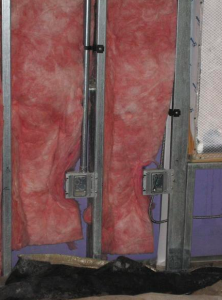Historically, building professionals mostly have been interested in their buildings’ aesthetics, cost, structural performance and maintenance-free claddings. Energy efficiency has been on the back burner, largely because energy has been cheap and codes through the 1970s and early ’80s were primarily focused on life-safety issues. This way of thinking has led to some beautiful buildings with “unintended consequences”. I’m sure you’ve heard of the “Death Ray Hotel” in Las Vegas, which had reports of guests being burned poolside by the reflected heat from the sun off the glass curtainwall. Similarly, the “Fryscraper” in London recently melted a Jaguar and started a fire in a barbershop. The glass on these buildings looks beautiful but obviously is not the best configuration for dealing with the sun’s radiant energy.

Fortunately, there are ways to improve an existing building’s performance. The majority of energy costs in commercial buildings are heating, ventilating and air conditioning, and lighting. However, if you are considering a major renovation of your building—recladding or gutting the interior—a capital investment to improve the envelope with insulation and air sealing should be your No. 1 priority.
Keys to a High-performance Enclosure
Commercial buildings are much more complex than residential structures in their construction systems, the materials used and the way they are operated. They are often under large pressure differentials, which cause the movement of mass quantities of conditioned and non-conditioned air. This air also contains moisture, which may condense when it comes in contact with cold building materials. Trapped moisture in building cavities or water condensing on non-thermally broken window frames can cause durability problems. When retrofitting your building envelope, the best practice is to select the best materials and methods that work in concert to control heat, air and moisture flow in and out of building enclosures.
Every enclosure should have four layers. Managing heat flow, airflow and moisture flow is a multi-part process that requires having a moisture-control layer, thermal-control layer, an air-control layer and a vapor-control layer. Some materials can accomplish one or more layer functions. Consider the following:
1.] Reducing heat flow by conduction (the internal energy flow from an area of higher temperature to one of lower temperature) requires more than insulation with a good R-value. How insulation is installed is just as important as how much insulation is installed. U.S. Department of Energy, Washington, D.C., studies have shown poorly installed insulation performs at a level 28 percent less than expected. Insulation should be in contact on all six sides with the building components around it and installed without compressions, voids or gaps.
Additionally, thermal bridging—heat flow through the building’s framing—can easily cut the effectiveness of the insulation in half. It’s not uncommon for buildings to have a 25 percent framing factor. This means for every 1,000 square feet of opaque walls, there is 250 square feet of framing and 750 square feet of insulated cavity. Newer codes recommend continuous insulation (CI) on the building’s exterior to reduce thermal bridging.

